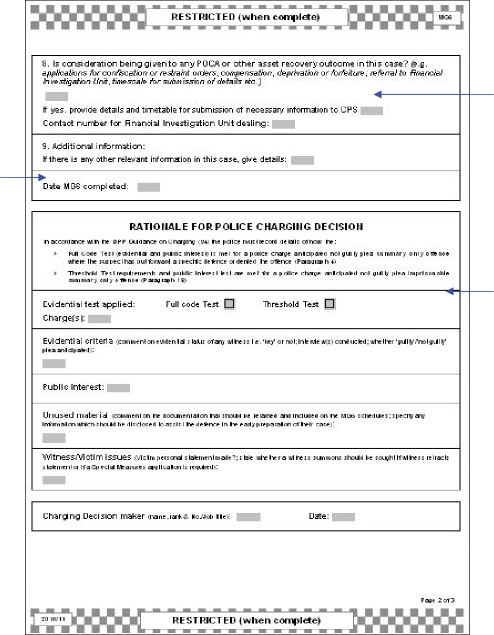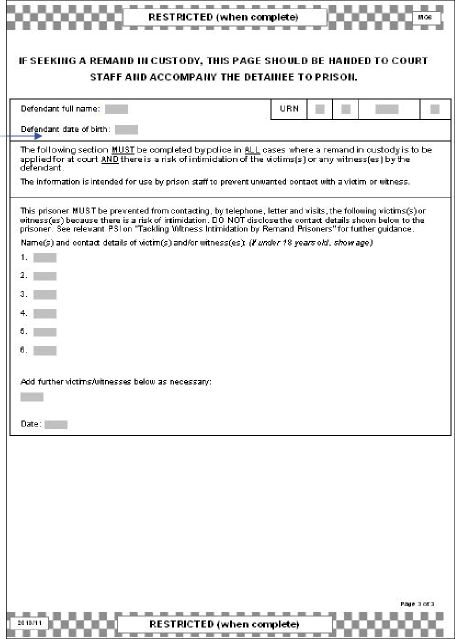
< Previous | Contents | Next >
MG6 CASE FILE EVIDENCE AND INFORMATION
The purpose of this form is:
To inform the CPS prosecutor of all relevant background information (some of which may not be disclosable to the defence) for an effective case review
To assist the prosecutor in considering both the evidential and public interest tests
To provide target dates for the supply of relevant types of evidence.
To document the rationale for police charging decisions in accordance with Director’s Guidance on Charging (v4).
The FIU will provide information to CPS in accordance with nationally agreed processes.
It is important to advise CPS whether the defendant is a candidate for a POCA application and what stage enquiries have reached in cases where POCA is being considered. These matters need to be taken into account as part of the prosecution process at the earliest opportunity.
This section is to be used to document the rationale for a police charging decision in the circumstances described, in order that a CPS prosecutor can review this, where applicable, prior to the first court appearance.

This section has been introduced as part of a cross – CJS initiative to protect vulnerable and intimidated witnesses and is designed to enable the Prison Service to prevent detainees held on remand from threatening or intimidating witnesses prior to trial. It must be completed, in addition to an MG7 where a remand in custody is sought and there is a risk that a defendant may try to intimidate witnesses in the case.
